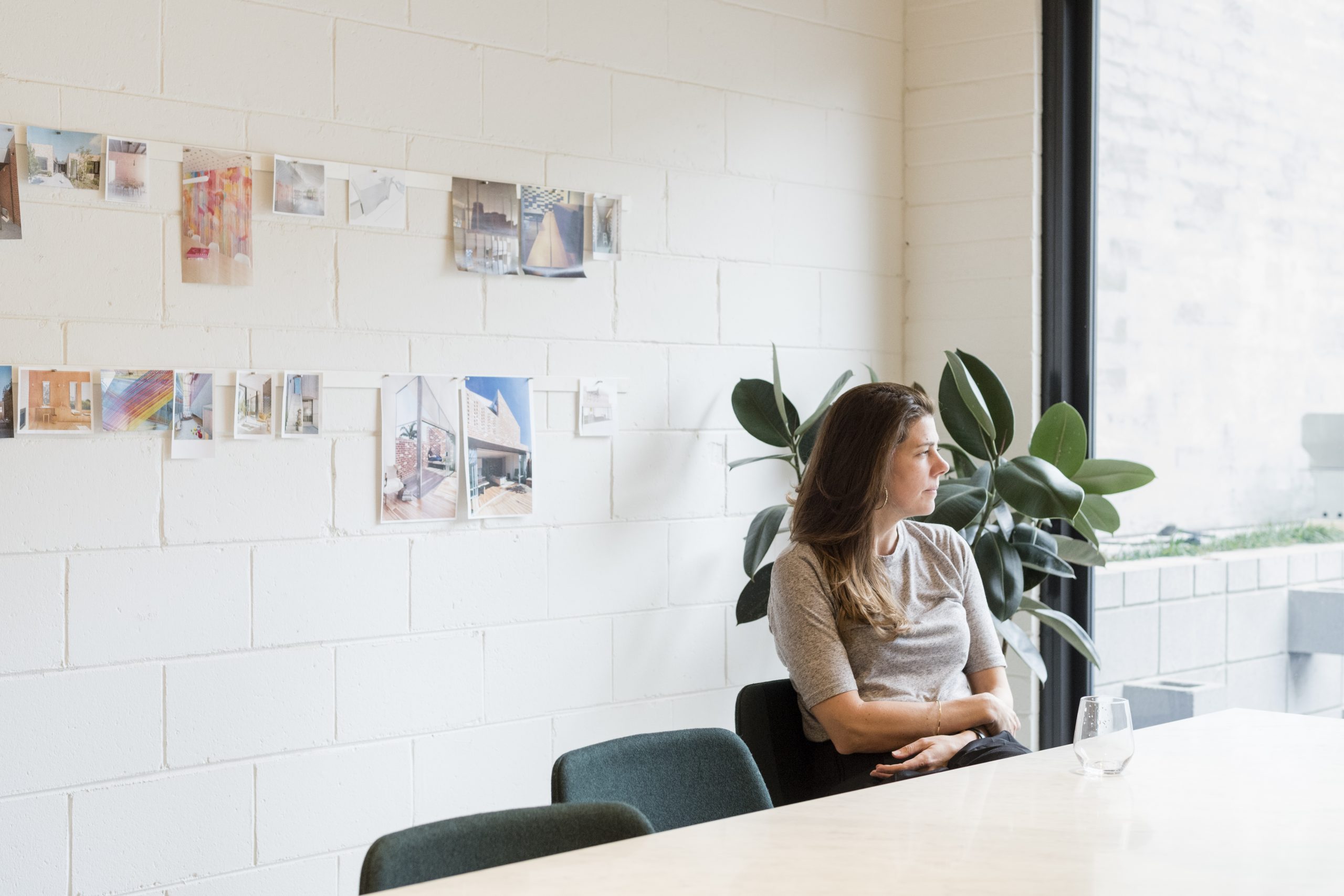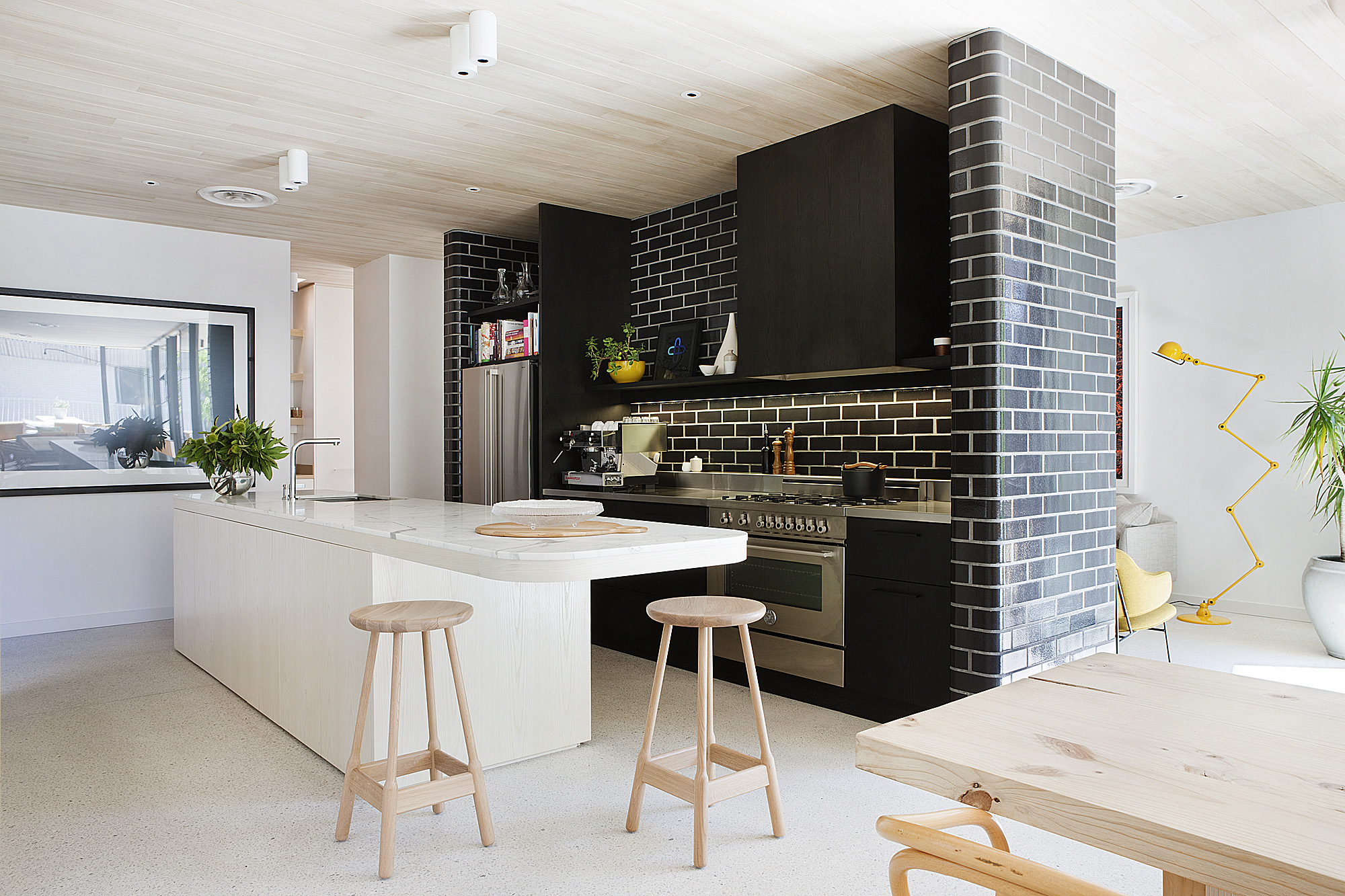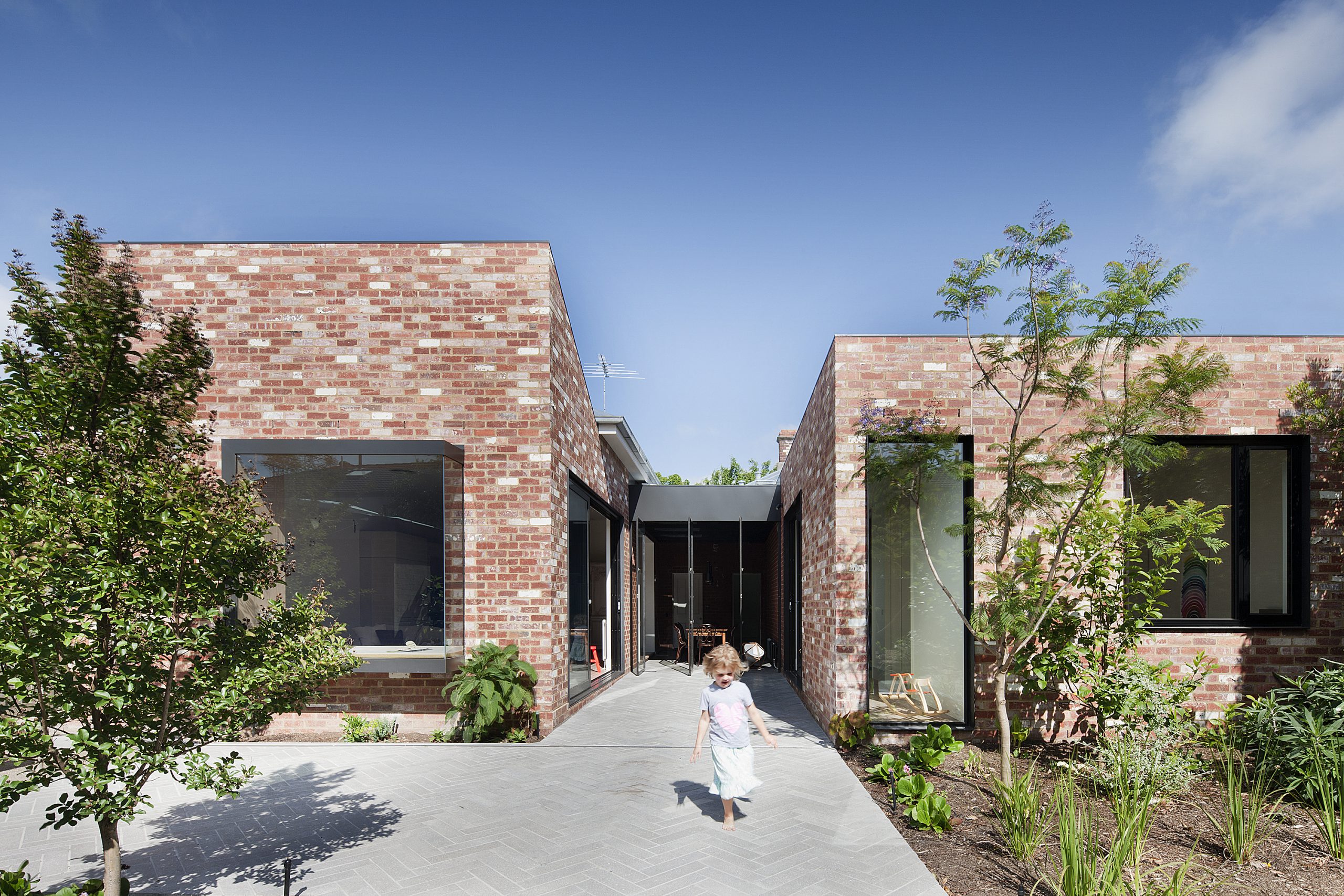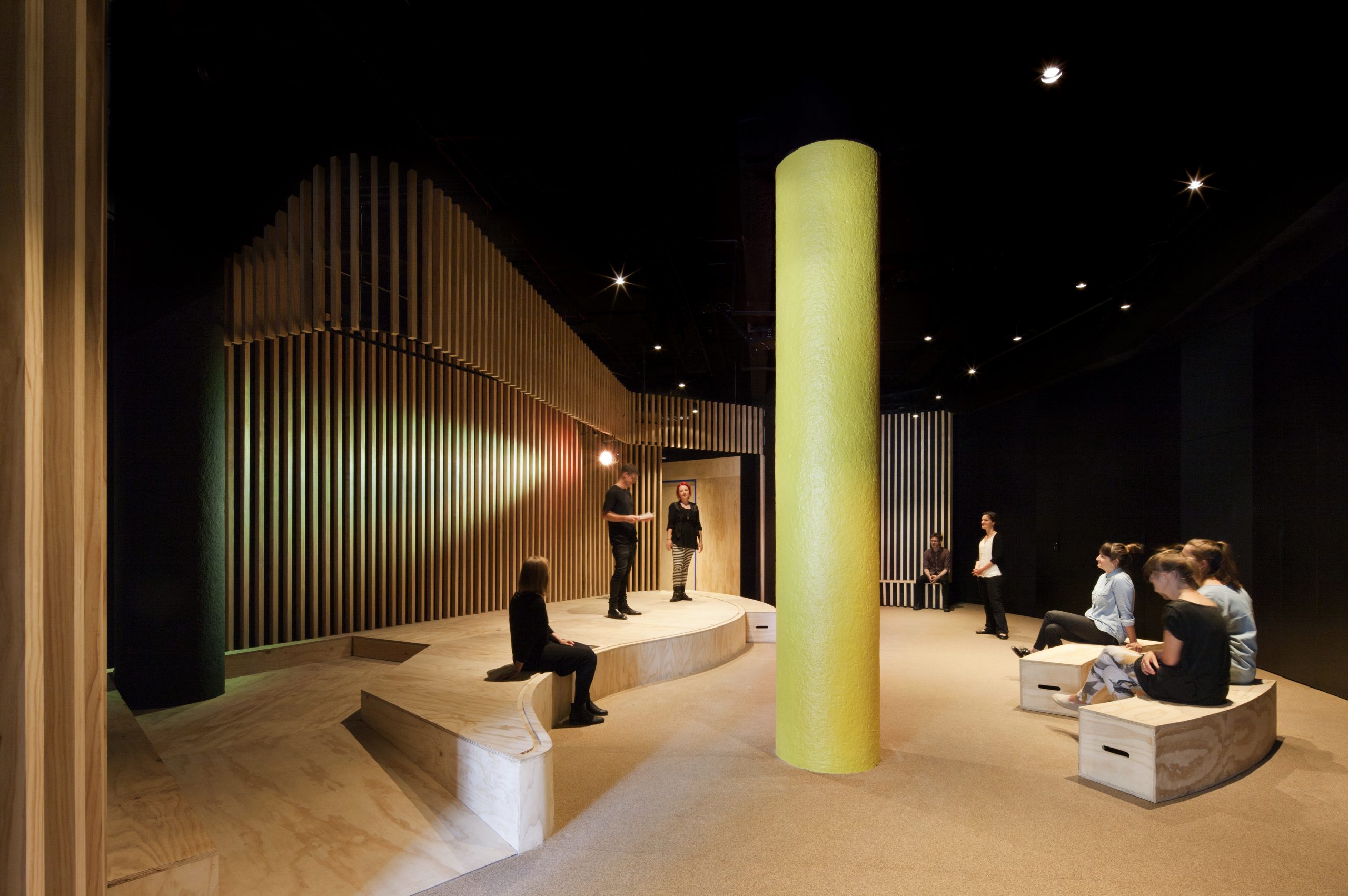Clare Cousins creates buildings to breathe in
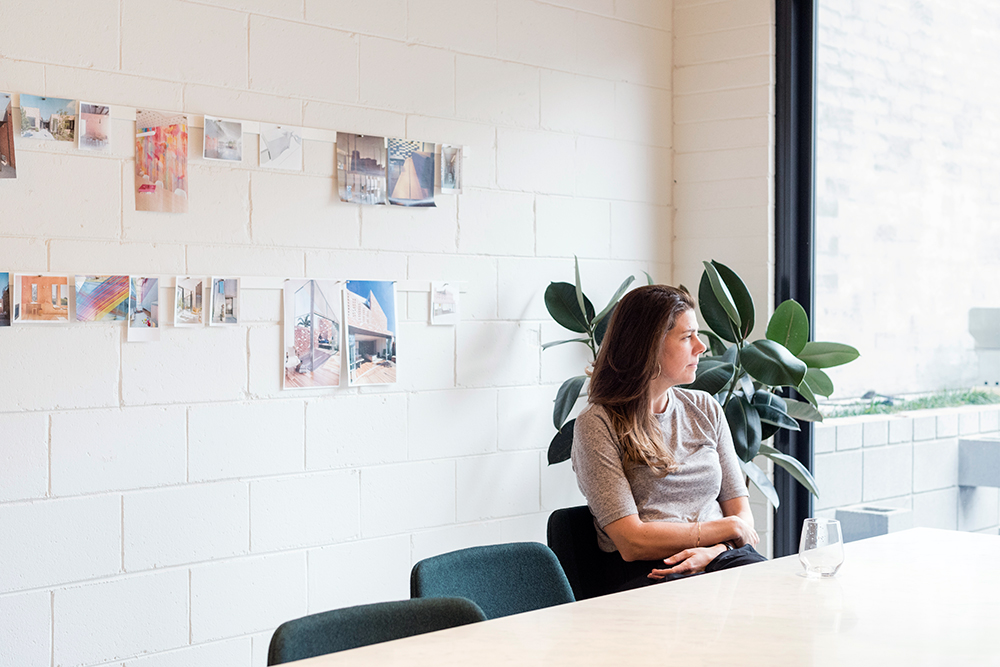
Clare Cousins remembers The Barbican. She was eight years old and living in London. Her father, a specialist surgeon had brought the family to the city via Berlin, and young Clare had her eyes open. She couldn’t articulate it at the time, but the Barbican’s imposing structure and raw textural qualities made an impression. “It was like a little city within a city,” she says. “The geometric forms and ‘tough’ materials, the bush-hammered concrete, softened by the lush planting and a confident use of colour internally.” The family soon returned to their hometown of Melbourne, but the influence held strong.
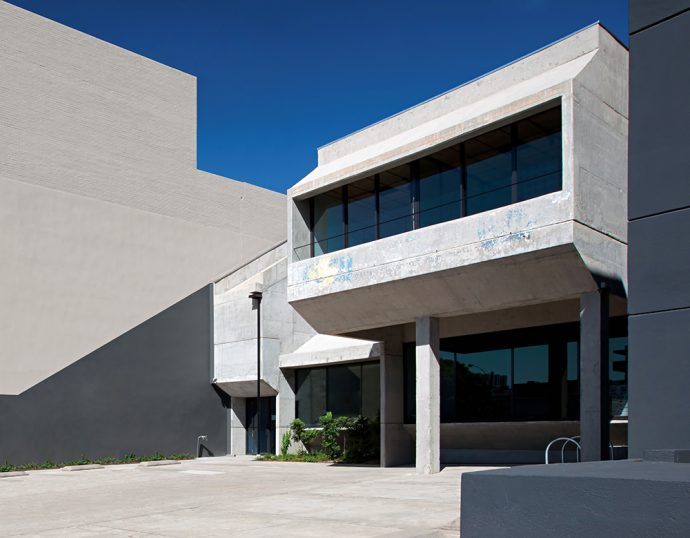
Clare Cousins Architects is a diverse studio. Based in a North Melbourne workspace dubbed ‘The Blackwood Street Bunker’, a semi-brutalist space that adjoins her husband Ben’s building practice, the design pits open-plan desks against glazed office spaces. Raw concrete flooring connects with warm plywood walls; floor-to-ceiling windows reveal a generous deck. What was once a cramped, low-ceiling ‘70s office block is still a low-ceiling ‘70s office block, now softened with curved walls, subtle planting and airy communal spaces.
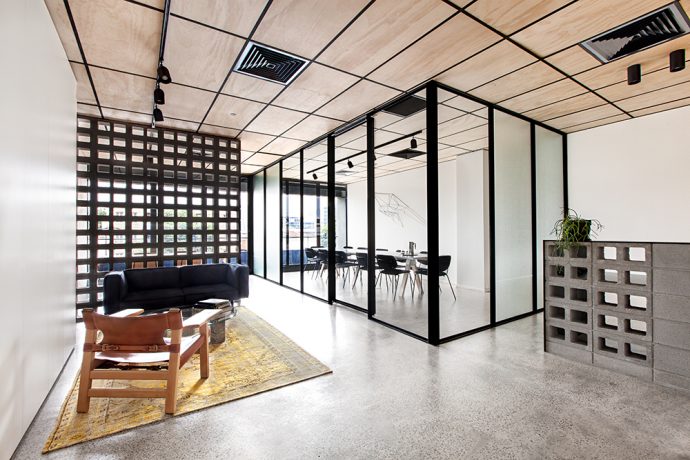
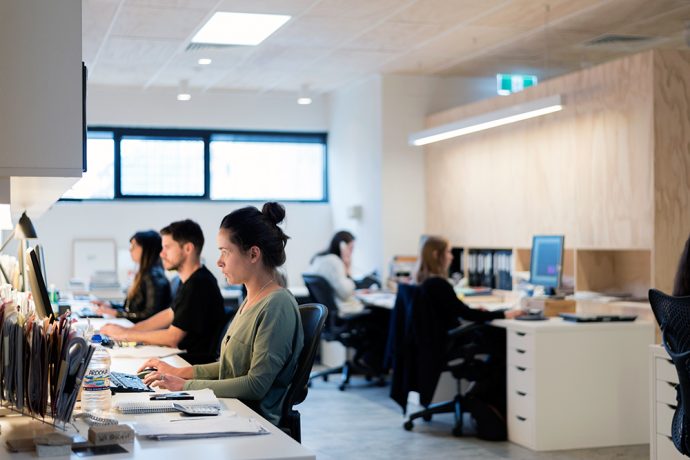
Clare’s 10-strong team has around 25 active projects. Their folio spans commercial spaces, cultural installations and retail, but it’s houses they love. The practice thrives on dwellings with distinct personalities and renovations that cleverly navigate original buildings: a Victorian façade mixed with copper concertina, structural steel against a Californian bungalow, a family home blending inner-living zones into outdoor decking. Consistent to all is a fluidity of space. Windows stretch wide and deep. Sidewalls open to connect rooms. These are buildings you can breathe in; that help enable life, not control it.

Building houses is about building relationships, and Clare’s team takes time to understand those who dwell within. “For us, it’s really about trying to understand how people live and what they’re attracted to,” she explains. “We ask about daily habits. How they sleep, where they sleep, who gets up early… You find there are a lot of chuckles.” This conversational tactic spans the entire design process. “It’s not about saying: ‘Here is the perfect house. This is it. We’ve worked it out. This is what it should be,’” Clare says. “We take a collaborative, small-steps approach.”
Unlike many in her field, Clare cut her teeth on construction. While chipping away at her architecture degree at RMIT, she landed a job at the construction arm of the Van Haandel Group. Her task? To work on the Aurora Spa Retreat on the roof of St Kilda’s iconic deco Prince of Wales Hotel. “We were working with architects Wood Marsh and Paul Hecker,” Clare remembers. “It gave me a lot of understanding of the mechanics and process of construction: the importance of something being functional and buildable; working with trades rather than thinking you know the best way.” She was thrown right in: ordering materials and making mistakes, but buoyed by the energy and support of her colleagues. After over two years on the job, Clare petitioned Wood Marsh to give her a six-month role and ended up staying for three years.
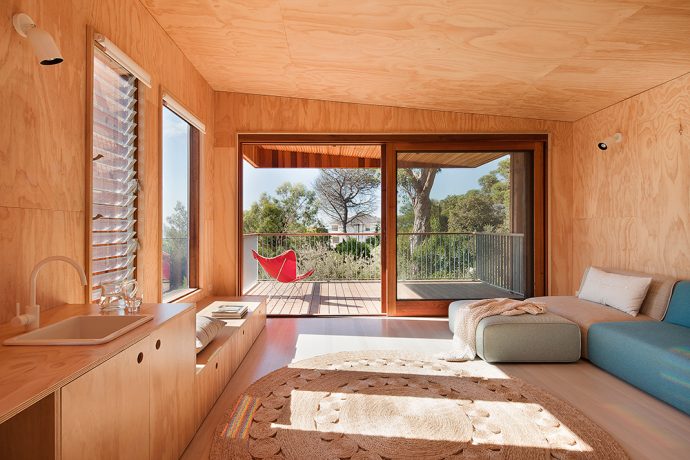
The approach of Clare Cousins Architects is often referred to as ‘holistic’, a much-bandied around term, but here it makes sense. From early site meetings through to design, construction and interiors, the practice is hands on; construction excites as much as design. Aesthetically, Clare strives for a balance of raw and refined. Her houses interplay pared-back, natural materials and subtle (sometimes punchy) colour. “I’ve always been interested in limited material pallet, using materials to their advantage,” she says. “Whether it be brickwork or timber, there’s enough beauty that it doesn’t have to be ornate to have a sense of interest.”
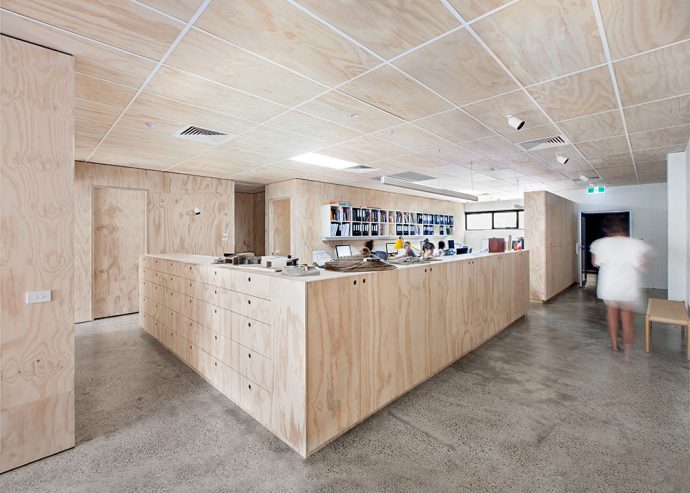
Affordability and maximising liveable space are front-of-mind, too. “Volume builders are always telling people: ‘you can get a house for this big and it’s this amount of money’,” Clare says. “For us it’s the complete opposite. It’s about how big and how little you have to spend on it.” So rather than build walls for a small-budget family apartment in a heritage-listed Melbourne building, Clare and her team used plywood joinery to define spaces, devised a mezzanine loft to maximise storage and snuck in a neat workstation below.
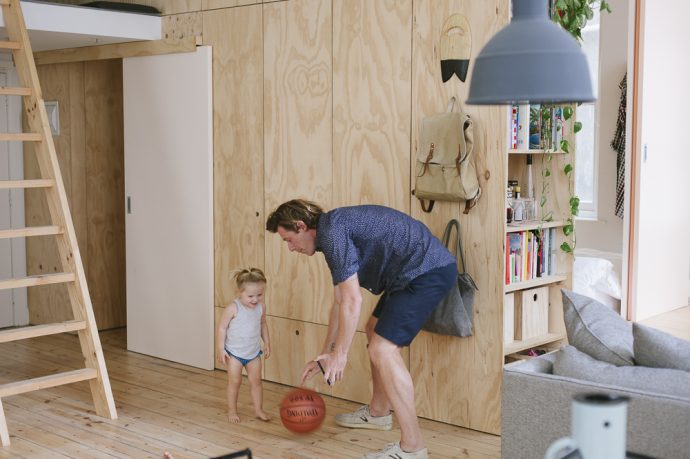
Outside of her practice, Clare openly champions Melbourne’s culture of collaboration and its “collegial” architectural spirit. The practice recently invested in The Nightingale, a five-storey apartment block spearheaded by Jeremy McLeod of Breathe Architecture. Rather than go to large developers for capital, The Nightingale asked likeminded architects to invest in the model. Twenty-seven shares were issued and Clare Cousins Architects bought one, along with other firms such as Six Degrees, Wolveridge and Andrew Maynard Architects. The idea? By knocking off superfluous items, such as car parks, agent fees and display suites, time and money are allocated to conscious and long-lasting design. The Commons – a much awarded pilot building using a similar model – is already up and running, but The Nightingale takes things further with an eight-star energy rating. “The idea is that this model can be replicated over numerous sites; each designed completely differently,” Clare explains. “Six Degrees is already working on the next one, Andrew Maynard is looking to do one and so are we… Working together only strengthens it. The point is to create great spaces. Not just to hit a bottom line. That’s the spirit we want to foster.”

On top of her day-to-day – which includes anything from site meetings and furniture appraisal to design work and drawing – Clare sits on The Chapter Council of The Australian Institute of Architects and leads public talks, which is important to her as both an architect and woman in her field. “I hate public speaking, but I believe young women need older women to be seen,” she says. “Gender equity is a big issue. It still amazes me when you hear the statistics about the pay gap; that’s obviously across all industries.” Despite the relatively equal numbers of men and women entering architecture, there is a striking lack of women in senior leadership or management roles. “I don’t feel like I personally have felt it so much, but I know it’s prevalent and a problem,” she says. “This is what’s going on. This is the reality. We have to address it.” As the mother of two young daughters, and with 10-years leading her practice, Clare’s a walking example of what’s possible. “There’s still such a perception that architecture is elitist or unaffordable,” she says. “We need people not to be afraid of architecture.”
To see more of Clare Cousins Architects work, visit: clarecousins.com.au. Thank you to Shannon McGrath, Lisbeth Grossman, Olga Bennett and Daniel Aulsebrook for their photographs.
